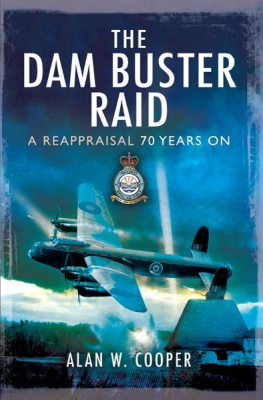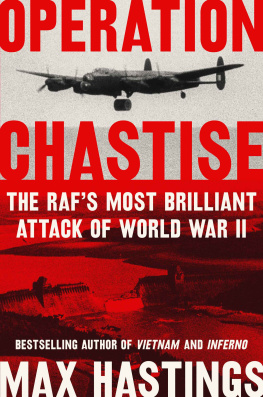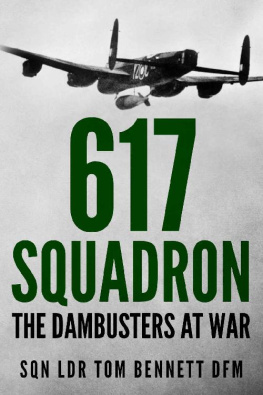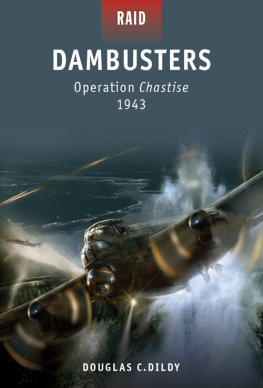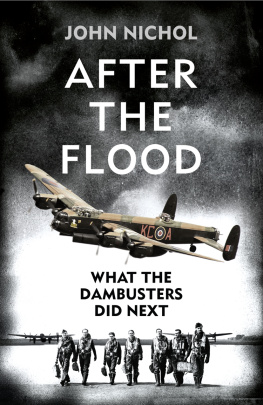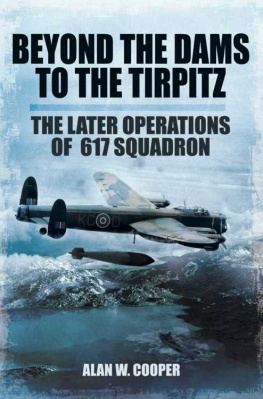
First Published in Great Britain in 2013 by
Pen & Sword Aviation
an imprint of
Pen & Sword Books Ltd
47 Church Street, Barnsley, South Yorkshire S70 2AS
Copyright Alan W. Cooper, 2013
ISBN: 978-1-78159-474-2
PDF ISBN: 978-1-47382-921-3
EPUB ISBN: 978-1-47382-835-3
PRC ISBN: 978-1-47382-878-0
The right of Alan W. Cooper to be identified as author of this work
has been asserted by him in accordance with the Copyright,
Designs and Patents Act 1988.
A CIP catalogue record for this book is
available from the British Library.
All rights reserved. No part of this book may be reproduced or transmitted in
any form or by any means, electronic or mechanical including photocopying,
recording or by any information storage and retrieval system, without
permission from the Publisher in writing.
Typeset in 11/13pt Palatino by
Concept, Huddersfield
Printed and bound in England by
MPG Printgroup Ltd, Victoria Square, Bodmin, Cornwall.
Pen & Sword Books Ltd incorporates the imprints of Pen & Sword
Archaeology, Atlas, Aviation, Battleground, Discovery, Family History,
History, Maritime, Military, Naval, Politics, Railways, Select, Social History,
Transport, True Crime, and Claymore Press, Frontline Books, Leo Cooper,
Praetorian Press, Remember When, Seaforth Publishing and Wharncliffe.
For a complete list of Pen & Sword titles please contact
PEN & SWORD BOOKS LIMITED
47 Church Street, Barnsley, South Yorkshire, S70 2AS, England
E-mail:
Website: www.pen-and-sword.co.uk
Contents
Dedication
This book is not to decide if the dams raid was a great success or not, but to make sure all 133 men, and particular the fifty-three who died, are always remembered for their bravery and the great sacrifice they made to make sure that we stayed free; and not under the threat of a regime that had not been seen previously, or we hope never is seen again.
Acknowledgements
My grateful thanks to: David Worrow; Paul Morley; Dave Birrell; Mike Evans; Yasmin Ellis; Mrs Trixie Heveron; Charles Foster; Hartley Garshowitz; Dominic Howard; Darryl Nugent; Dr Albert Speer.
Ken Patterson for his great help in making sure with an expert eye that the book was kept on the straight and level.
Publications:
Dambuster Crash Sites Chris Ward & Andreas Wachtel
The Men Who Breached The Dams Alan Cooper.
And my wife Hilda for continued support and help whenever it was asked for.
Introduction
Seventy years ago, in May 1943, an operation was carried out by the RAF which has now become one of the most memorable actions of the Second World War. It was carried out as just another way of contributing to the end of the war in Europe.
The raid on the Ruhr dams in Germany was this operation. It was the beginning of Bomber Command becoming a force to be reckoned with.
Why? It was carried out at a crucial point in the air war, during the air battle of the Ruhr. It showed that targets in the heart of Germany would be hit and were not impregnable. It was an Airborne Commando raid carried out by 133 men, was it a success?
With the heavy casualties involved, there are some who would say No! Three dams were attacked, two were breached. But it has to be pointed out that Barnes Wallis said his bouncing bomb was not suitable for use on the third dam the Sorpe because of its construction, earth not masonry. He also said that once you create a weapon and hand it over to the military you do lose control, to some aspect, on its use. We should also put on record that he was not behind the attack on the Sorpe dam.
However, looking at the other side of the coin, the RAF, because of the element of surprise, would only get one shot at breaching the dams; this element of surprise was a big factor
CHAPTER 1
The Dams
What was the reason for the attack on the Ruhr Dams in May 1943?
In October 1937, a list of plans known as the Western Air (WA) Plans was compiled by the Air Staff, for use in the event of war. One of these plans was WA5; attacks on German War Industry, including oil supply, in particular to the Ruhr, Rhineland and Saar.
From an in-depth study of dams, reservoirs and aqueducts as potential pre-war targets the Ruhr dams were identified as possible targets.
The idea to attack the German dams in the Ruhr was discussed by the Air Ministrys Bombing Committee in March 1938. This committee was formed in the 1930s with the idea of studying and accessing how Great Britain could hit, damage or destroy, vital German targets and weaken Germanys ability to wage war. There were many targets listed, discussed and agreed upon. Many could be attacked with conventional bombing; others, which were of a more complicated nature, would need specialized treatment.
On 15 July 1938 the economic and strategic importance of dams was discussed by the Plans Operations at the Air Ministry.
Attacking the dams situated in South Westphalia was discussed in committee on 26 July 1938, the objectives were clear:
(a) Cut off essential supplies of water for industrial and domestic purposes.
(b) Cause flooding and damage to industrial plants, railways, waterways, etc. in the river valley.
(c) And/or to prevent the maintenance of sufficient water for navigation in the inland waterways system.
To make one ton of steel required 150 tons of water.
The Ruhr dams were:
The Mohne situated in the Mohne Valley south-east of Dortmund, whose role was to collect rainfall to prevent winter flooding and to provide power for electrical generators. Of utmost importance was the part it played in sustaining the underground water supply vital for industrial and household supplies.
The Eder situated south of Kassel and south-east of the Mohne. It was built to act as a reservoir for the important Mittelland Canal that runs from the Ruhr to Berlin. It also prevented flooding of farmland in winter and finally served hydroelectrical power stations.
The Sorpe, Ennepe and Lister dams situated south of Dortmund and south-west of the Mohne. The roles of these dams were similar to that of the Mohne.
In total there were seven dams in South Westphalia, but the Mohne, Eder, Sorpe and Ennepe were considered of prime importance. The destruction of the outstandingly important Mohne Dam, with its massive loss of hydroelectric power, would have serious repercussions on the production output from the Ruhr, Germanys major industrial area.

The Ennepe Dam today. After the Battle Magazine
It was decided that the best time for an attack on the dams would be after a period of heavy rain when the reservoirs were full; to breach the dams when low with water would be more difficult than if they were full. If the Mohne dam was breached, the 130 million cubic metres of water contained in this dam would flow down the Ruhr Valley in hours and be so powerful that all villages and towns, as well as waterways in its wake, would be swept away and destroyed. The loss of water from the dam would mean four to five million people would be without water, and the mines and coke plants would come to a standstill owing to the lack of an industrial water supply.
The main problem was how to attack the dams. Normal conventional bombing would only chip the top of the dams; attack by torpedo would probably be thwarted by torpedo nets.
This meant that an attack on the Ruhr dams was mothballed for a time until some form of weapon, or attack, was designed. An idea of a method of attack did come to light not long after the Second World War began. But as with many things, it was not really taken seriously. At the time, the Controller of Armament Research and Development at the British firm of Messrs Vickers Armstrong Ltd, Weybridge, was Dr Barnes Wallis. He, with his scientific brain, had come up with an idea. He was 52 when the war began in September 1939 and had a background of success, he designed the successful Airship R100 which flew to Canada and back, but when the Government R101 airship crashed, all airships and development was stopped and the R100 broken up. He also developed the geodetic method of construction used in the Wellesley and Wellington bombers. Many a crew owed much to this method of construction in getting back to the UK after being damaged. The idea was that when an aircraft was hit, much of the flak or fighter firepower would go through the intertwined basketlike fuselage, and not damage any vital parts of the bomber.
Next page
